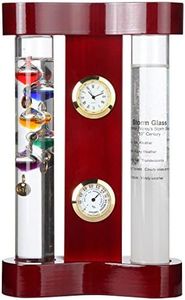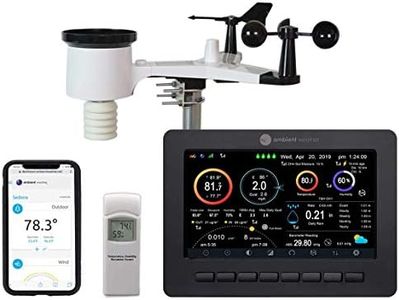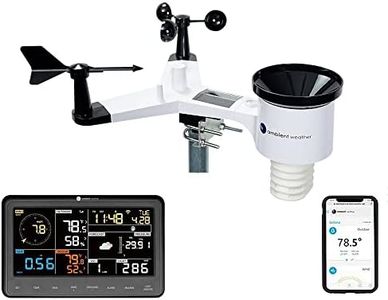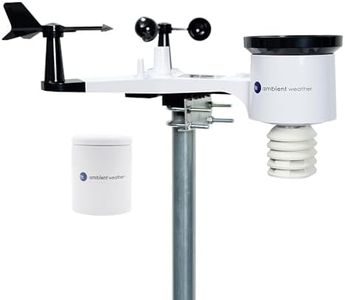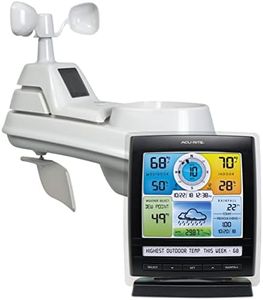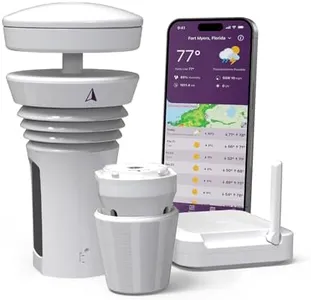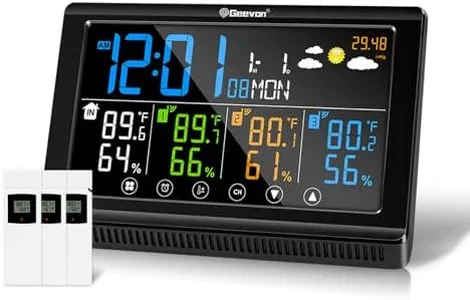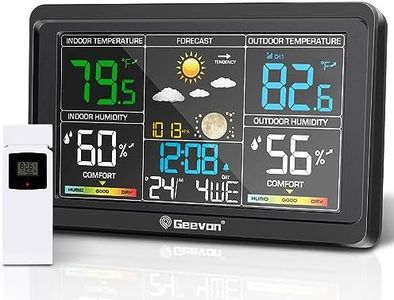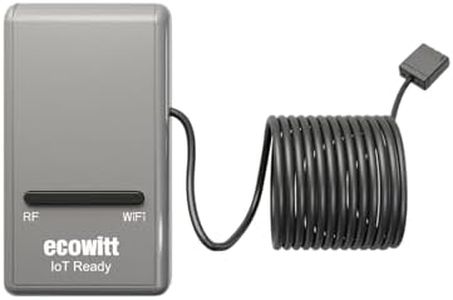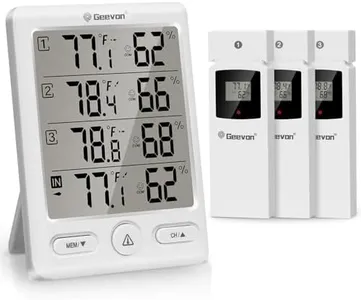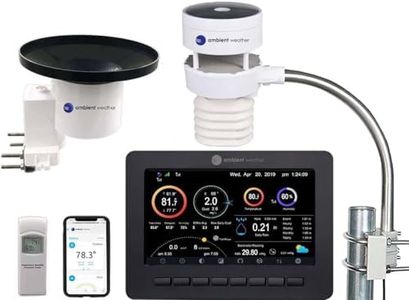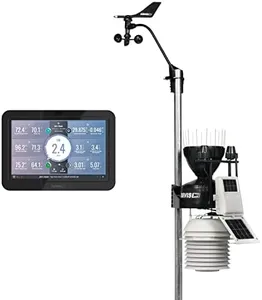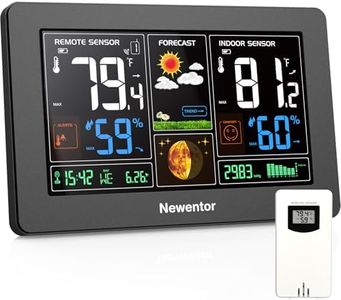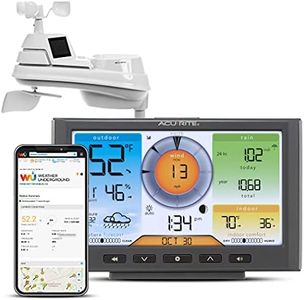10 Best Weather Stations 2025 in the United States
Our technology thoroughly searches through the online shopping world, reviewing hundreds of sites. We then process and analyze this information, updating in real-time to bring you the latest top-rated products. This way, you always get the best and most current options available.

Our Top Picks
Winner
Ambient Weather WS-2000 Smart Weather Station with WiFi Remote Monitoring and Alerts
Most important from
2771 reviews
The Ambient Weather WS-2000 Smart Weather Station is a robust option for anyone looking to monitor weather conditions at home or in their backyard. This device features a bright TFT color display that makes it easy to read various metrics, such as wind speed, temperature, humidity, and rainfall. One of its main strengths is the integrated sensor array, which captures a wide range of weather data, including UV and solar radiation, making it suitable for gardening enthusiasts and those interested in detailed weather tracking.
The wireless connectivity is another highlight, allowing the station to transmit data to the world's largest personal weather station network. This feature is particularly useful if you want to access real-time data remotely, keeping you updated even when you're not home. Additionally, it accommodates both imperial and metric units, with calibration options that enhance its usability.
However, there are a few drawbacks to consider. The sensor array requires 3 AAA batteries, which are not included, potentially adding to your initial costs. Also, while the console is powered by an included adapter, it may limit placement options unless you have a nearby power source. It is primarily made of plastic, which raises some concerns about durability, especially in harsh weather conditions. Additionally, some users might find the learning curve a bit steep when setting up and understanding all features, particularly if they are not familiar with weather stations.
Most important from
2771 reviews
Ambient Weather WS-2902 WiFi Smart Weather Station
Most important from
12794 reviews
The Ambient Weather WS-2902 is an impressive option for anyone interested in monitoring local weather conditions, particularly homeowners and gardening enthusiasts. One of its standout features is its comprehensive sensor array, which measures a variety of weather parameters including wind speed, temperature, humidity, and rainfall. This array offers authentic hyper-local data, crucial for users who want precise information about their immediate environment. The weather station is Wi-Fi enabled, allowing users to access data remotely and set up smart home integrations with platforms like Google Home and Alexa, adding to its versatility.
The easy-to-read color LCD display is another strength, making it user-friendly for those who may not be tech-savvy. Data transmission is enhanced with wireless connectivity, which is a plus for those looking to join the larger Ambient Weather Network, where they can share and customize their weather data.
On the downside, the WS-2902 does require three AAA batteries, which are not included, potentially adding to the initial cost. Additionally, while it is marketed as weather-resistant, the durability might not be as robust as some more expensive models on the market. The pole mount also needs to be purchased separately, which could be an inconvenience for some users. The lack of included batteries and the need for a separate mount might deter those seeking a more straightforward out-of-the-box solution.
Most important from
12794 reviews
Ambient Weather WS-1553-IP Smart Wireless Weather Station with Remote Monitoring and Alerts
Most important from
12794 reviews
The Ambient Weather WS-1553-IP Smart Wireless Weather Station offers a solid choice for garden enthusiasts and anyone wanting detailed local weather data. It features an all-in-one outdoor sensor array that measures key weather details including precipitation and humidity with frequent updates every 16 seconds, which helps keep information timely. The station connects via WiFi or Ethernet, allowing for flexible and reliable data transmission to your phone or computer. Being solar-powered adds convenience by reducing the need for frequent battery changes.
The unit supports remote monitoring and integrates with smart home systems like Alexa and Google Home, making it easy to receive alerts or automate home responses based on weather. Its connection to a large weather station network also enables sharing and customizing data, which is beneficial for users interested in community-based weather insights. Durability appears solid with its metal and solar panel construction, suitable for outdoor use. While the product is wireless for easy setup, it still provides the option for Ethernet if a stronger wired connection is preferred.
This model is distinguished by its ease of use, smart home compatibility, and timely data updates, making it a suitable option for those seeking a comprehensive, connected weather station that requires relatively low maintenance. It may be less ideal if you require the highest accuracy sensors or advanced onboard data logging.
